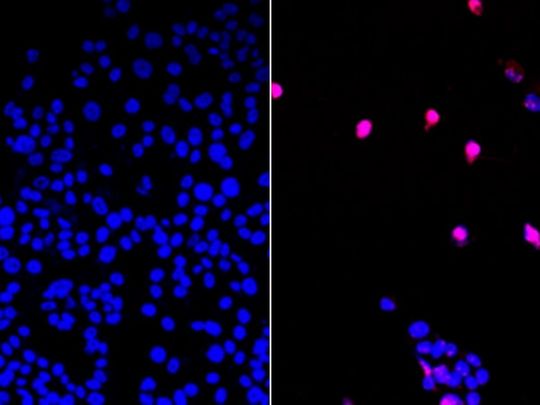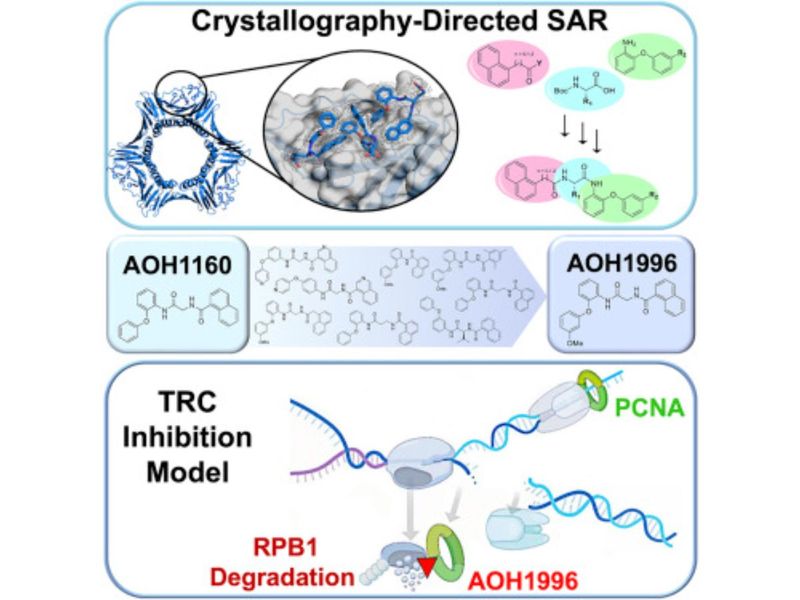
Highlights
- The City of Hope, a California-based cancer research group, has been developing the drug, known as "AOH1996".
- The drug’s main mechanism of action targets a cancerous variant of the protein proliferating cell nuclear antigen (PCNA).
- In animal models, AOH1996 has demonstrated a desired pharmacological effect by selectively attacking the altered form of PCNA found in cancer cells.
Early research has unveiled a groundbreaking "cancer-killing pill" that shows potential in eradicating solid tumours while sparing healthy cells.
Known as AOH1996, the drug has been under development for over two decades, with the City of Hope, a prominent cancer research and treatment organisation, leading the charge, US media reported.
The drug's primary target is a cancerous variant of the protein proliferating cell nuclear antigen (PCNA) — identified by scientists as the protein responsible for DNA replication and tumour growth.
AOH1996 works by selectively attacking the altered form of PCNA found in cancer cells, effectively halting their growth, according to Prof Linda Malkas, who has been instrumental in the drug's development and the lead scientist who published results of their research work on August 1, 2023.
Mechanism of action
In a press release highlighting the drug's development, Prof Malkas drew an analogy to describe AOH1996's mechanism of action. She likened it to a snowstorm disrupting air traffic, where the target protein, PCNA, acts as a major airline terminal with multiple gates.
The drug specifically targets the altered form of PCNA found only in cancer cells. The "snowstorm", the drug, shuts down the airline hub, thus preventing the travel of planes carrying cancer cells in and out.
It has locations in California, Arizona, Illinois, and Georgia, and the team includes more than 11,000 researchers, associates, scientists, doctors, nurses, allied health professionals, graduate students, fundraising specialists, marketing professionals, volunteers and support staff.
'Promising results'
Although the research has mainly focused on subduing tumour growth in cell and animal models, the initial results hold immense promise.

The drug is now undergoing the Phase 1 of “clinical trials” (on humans) to assess its safety and efficacy.
Early indications demonstrate its effectiveness against various cancer types, such as breast, prostate, brain, ovarian, cervical, skin, and lung cancers.
This breakthrough is particularly significant as PCNA was once considered "undruggable," and this advancement offers hope for more personalized and targeted cancer treatments in the future. As further research unfolds, this innovative pill could prove instrumental in the battle against cancer.
Drug development
The research findings, published in the journal Cell Chemical Biology, showcased a therapy capable of effectively killing cancer cells from over 70 different "solid tumor cell lines."
The potentially game-changing treatment builds upon earlier studies conducted on animal models, where it demonstrated the ability to eliminate cancer cells associated with brain, breast, cervical, lung, skin, and ovarian cancers.
This innovative approach provides hope for more effective and targeted therapies against various solid tumours.
There are many cancer drugs — and cancer drug combinations, with individual side effects. The list includes chemotherapy, hormone therapies, targeted cancer drugs, immunotherapy drugs and bisphosphonates.
The new candidate drug, AOH1996, carries a deep significance as it was dedicated to a child named Anna Olivia Healy, born in 1996. Tragically, Anna lost her battle with a rare childhood cancer called "neuroblastoma” at the tender age of nine.
AOH1996 offers hope for improved treatments in the future.








